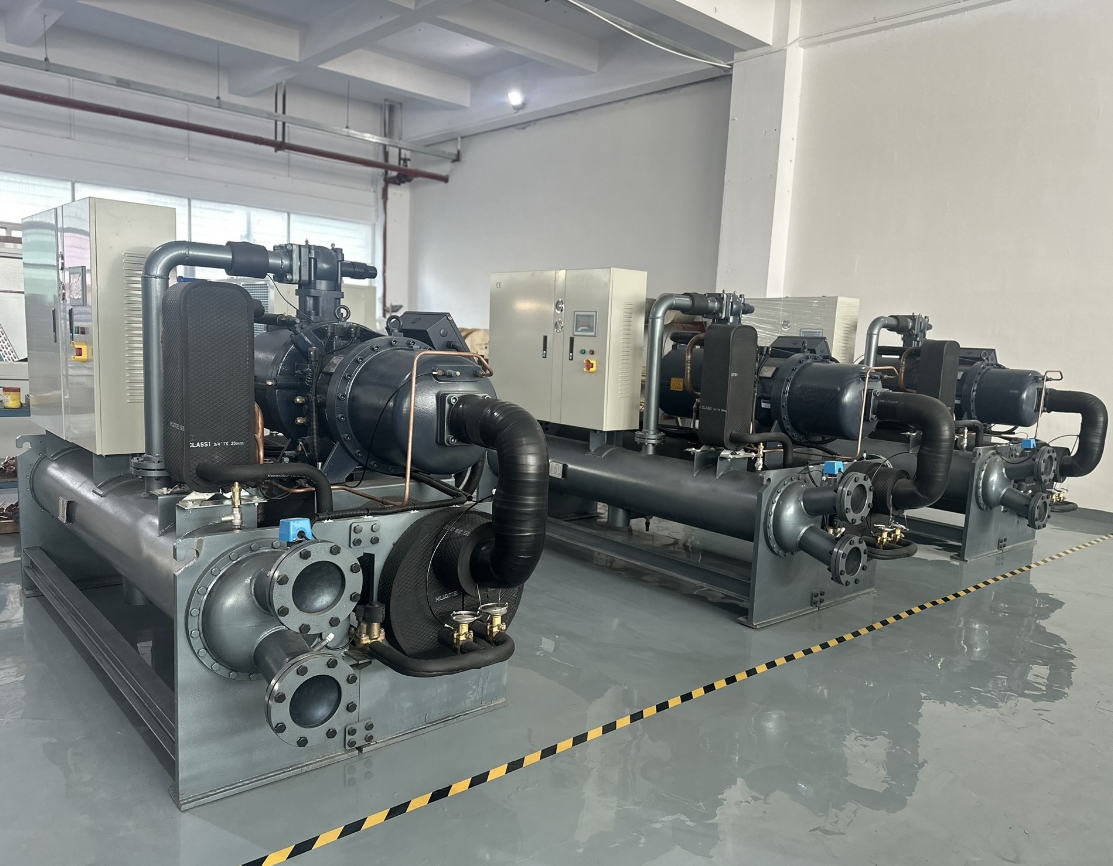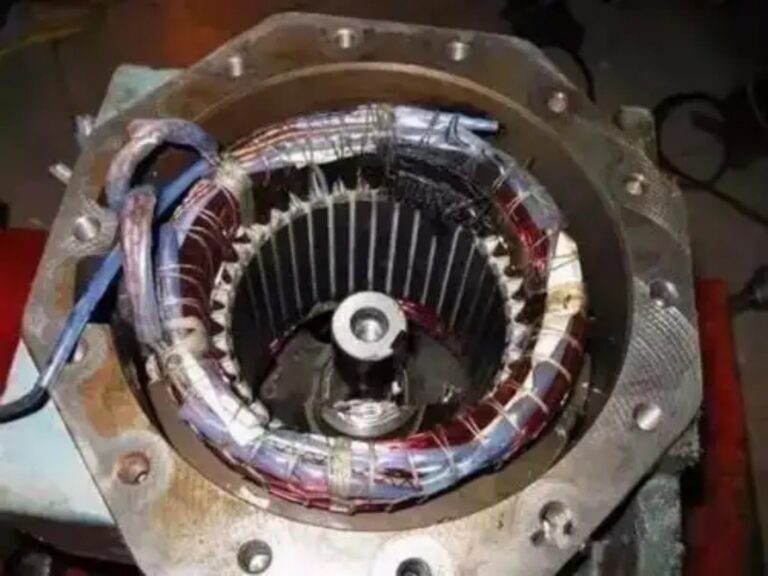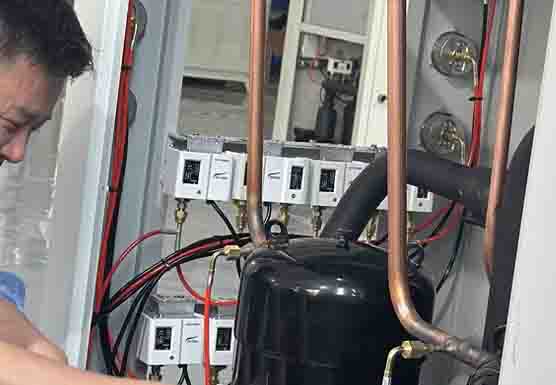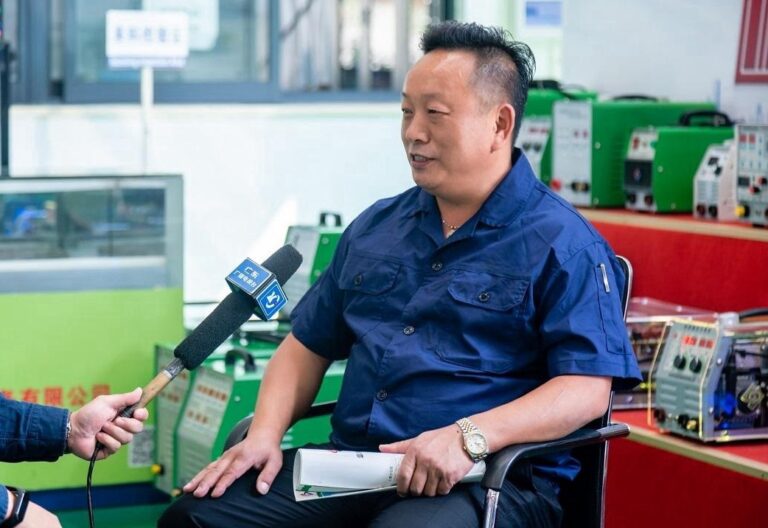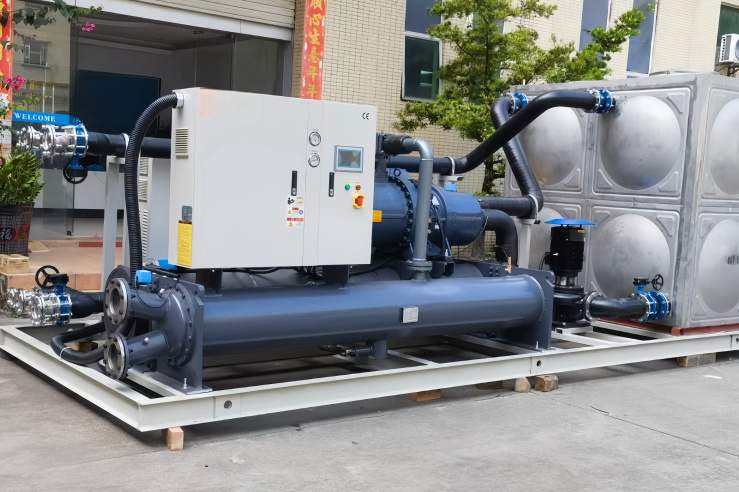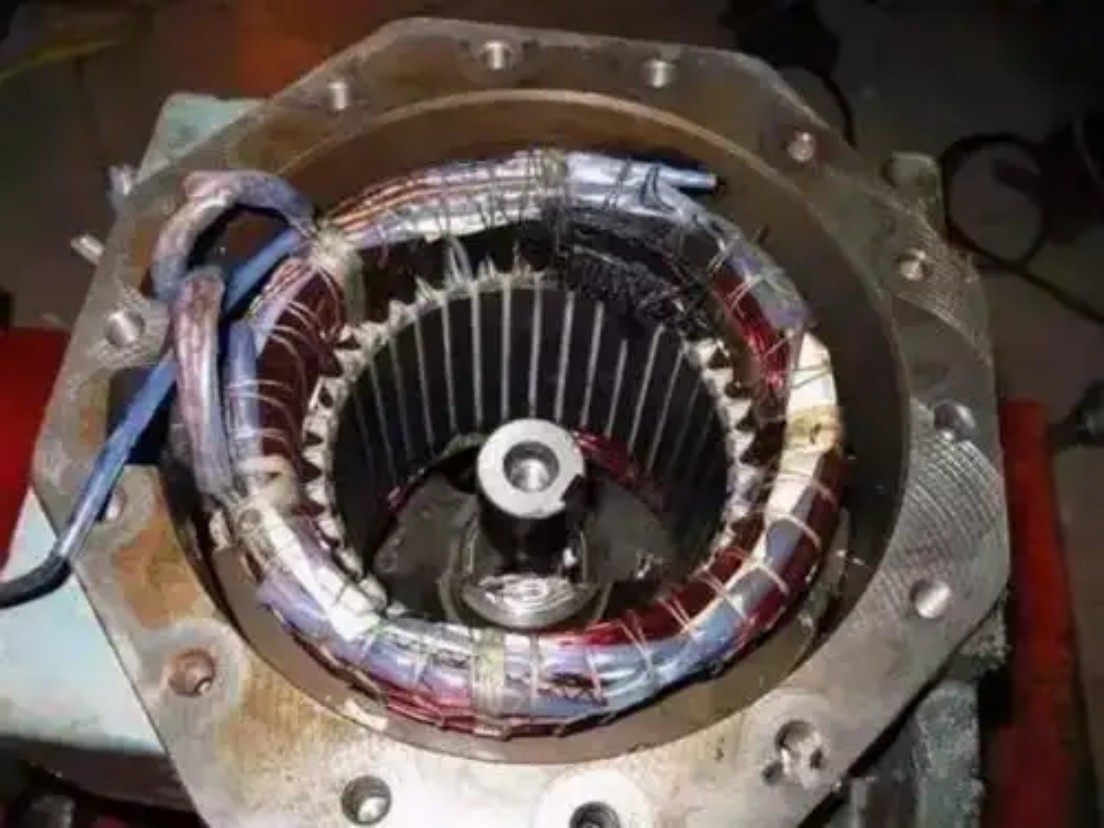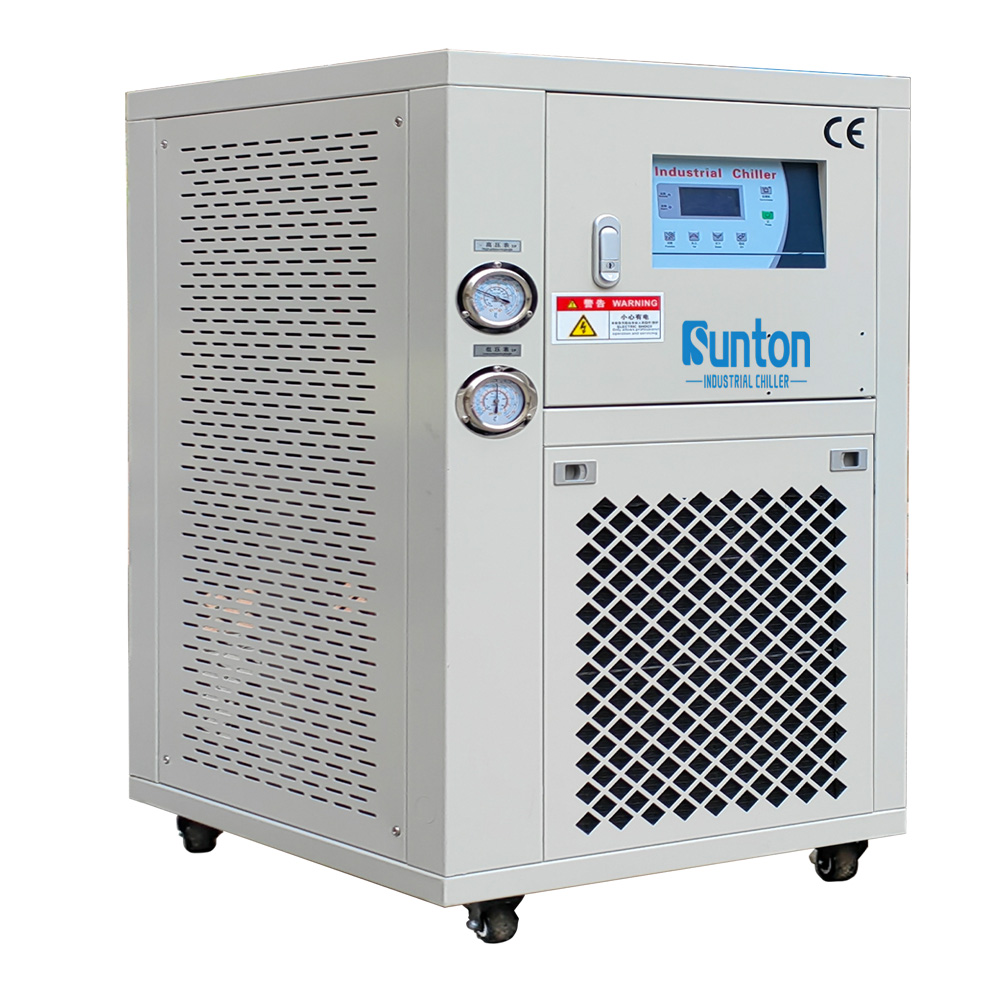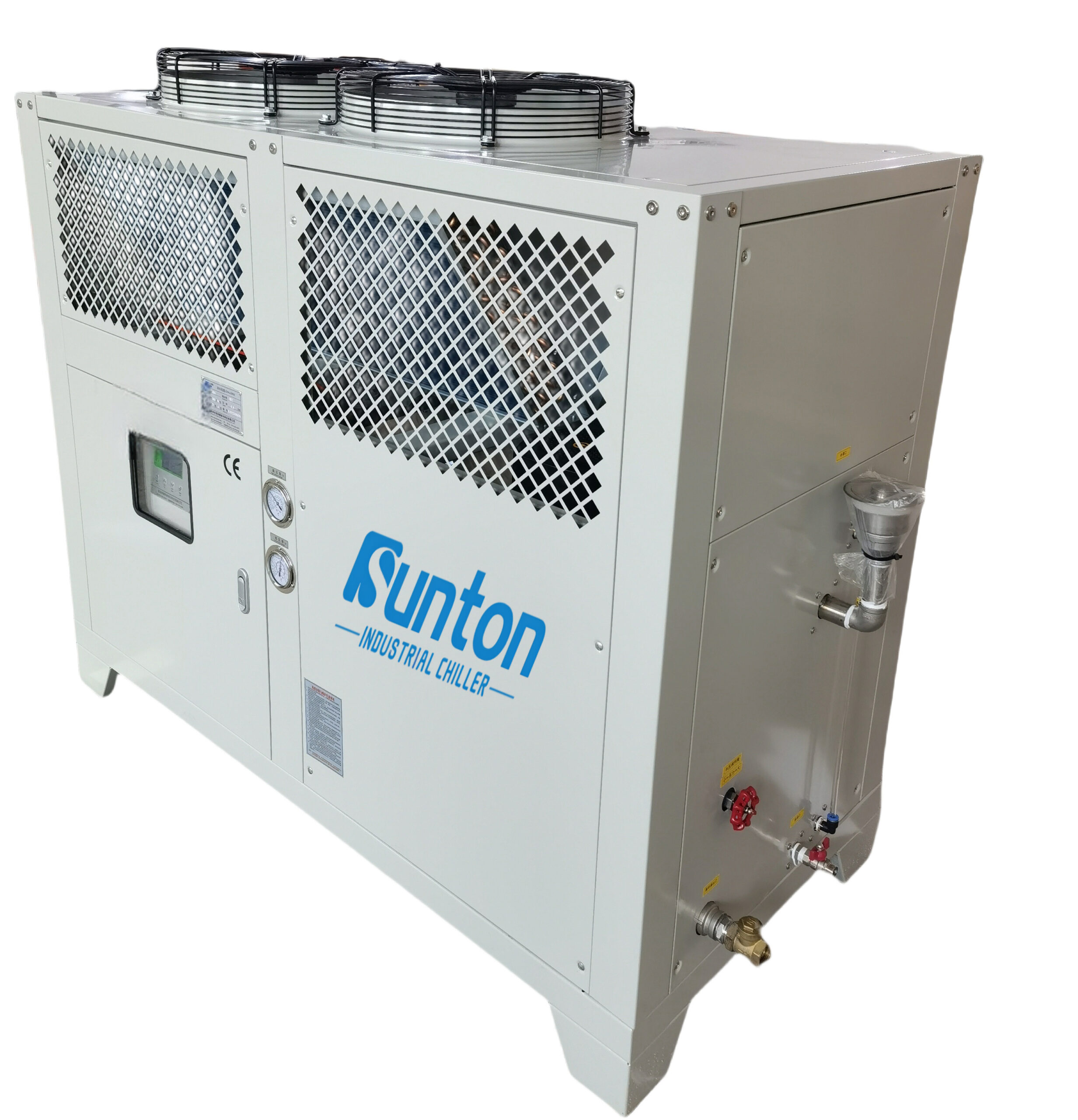-
Даліншань Індастріал Гуандун
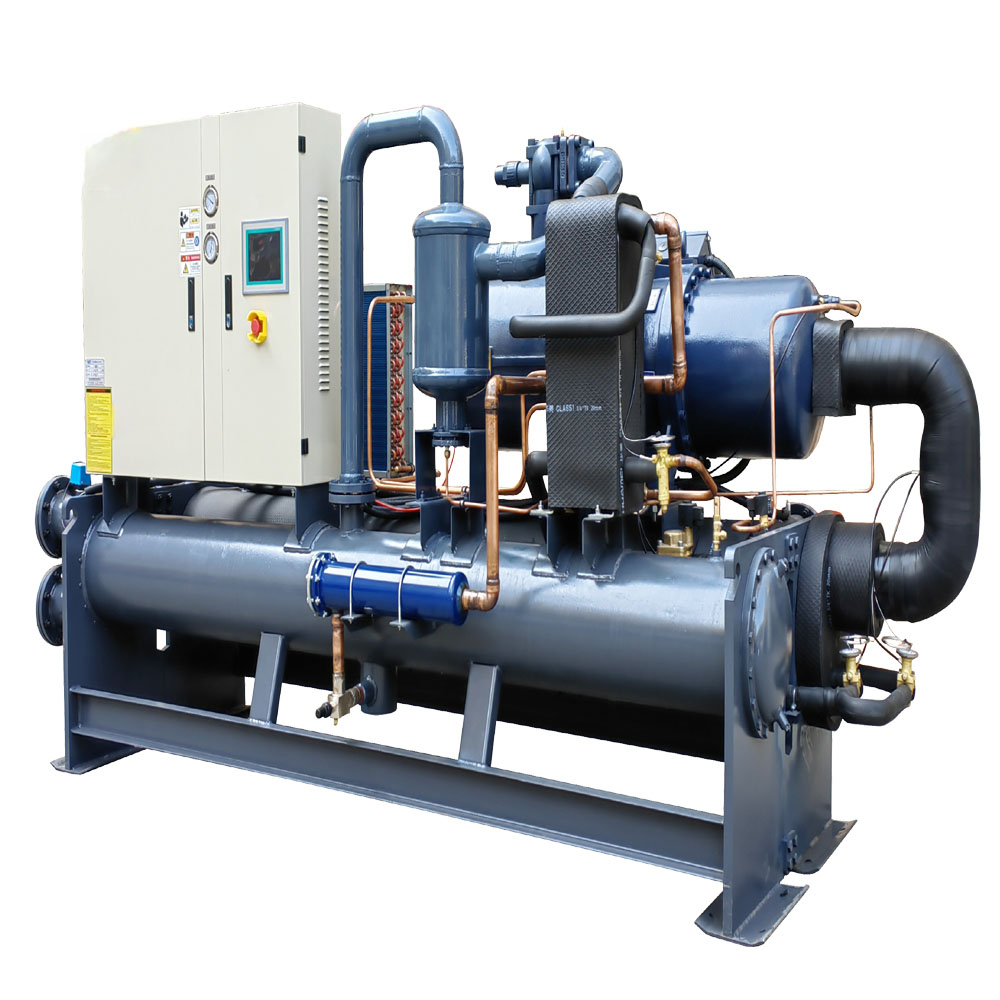
як виготовляються лазери?
Освоєння лазерного охолодження: найкращий посібник із точності та ефективності
У цій статті розглядаються важливі аспекти лазерне охолодження, досліджуючи його значення в різних галузях промисловості та надаючи повний огляд того, як він забезпечує оптимальну продуктивність лазерні технології. Від Промисловість пластмас і гуми до Центри обробки даних, розуміння лазерне охолодження необхідний для підтримки лазер ефективність, точність і довговічність систем. Незалежно від того, чи маєте ви справу з a діодний лазер в Електронна промисловість або a імпульсний лазер в Медична промисловість, цей посібник пропонує цінну інформацію про управління лазерне тепло і зустріч конкретних потреби в охолодженні.
Зміст
Що таке лазерне охолодження і чому це важливо?
Лазерне охолодження це важливий процес, який підтримує ефективність роботи та довговічність лазер системи. Лазерив тому числі діодні лазери і імпульсні лазери, виділяють значне тепло під час роботи. Як експерт із промислових охолоджувачів води, я на власні очі бачив, як надмірне тепло може погіршити продуктивність, зменшити термін служби та навіть пошкодити чутливі компоненти. Ефективний лазерне охолодження гарантує, що лазер працює в оптимальному діапазоні температур, зберігаючи цілісність лазерний промінь і підтримання точності в таких програмах, як лазерне різання.
Лазерне охолодження життєво важливий, оскільки він безпосередньо впливає на стабільність і надійність лазер система. Наприклад, в лазерне різання, стайня лазерний промінь необхідний для отримання чистих, точних розрізів. Без належного охолодження лазерВихідна потужність може коливатися, що призводить до непослідовних результатів і потенційного пошкодження матеріалу, що обробляється. Такі галузі, як Промисловість пластмас і гуми багато в чому покладаються на точність лазерне різання для виготовлення складних деталей. Тому підтримання ефективного система охолодження йдеться не лише про захист лазер обладнання, а й про забезпечення якості кінцевого продукту. Важливість лазерне охолодження не можна переоцінити, оскільки це захищає обидва лазер і виробничий процес. Люди, ми говоримо про збереження точності та ефективності. Це так критично!
Як працює лазерне різання та які вимоги до охолодження?
Лазерне різання це термічний процес, який використовує зосереджену лазерний промінь розплавити, випарувати або прогоріти матеріали. Ця технологія є широко використовується у таких галузях, як Механічна промисловість і Електронна промисловість за його точність і універсальність. The лазерний промінь спрямовується на поверхню матеріалу, де його висока щільність енергії створює інтенсивне тепло. The лазерне різання параметри процесу, наприклад потужність лазера, частота лазера, і енергія лазерного імпульсу, ретельно контролюються для досягнення бажаного ефекту різання.
У "The потреби в охолодженні для лазерне різання є значними через високі температури. Міцний система охолодження необхідний для розсіювання тепла, що утворюється під час лазерне різання процес. The система охолодження зазвичай включає a лазерний чиллер який забезпечує циркуляцію теплоносія через лазер система, що поглинає і відводить тепло. Ефективне охолодження гарантує, що лазер працює в оптимальному діапазоні температур, зберігаючи стабільність лазерний промінь і запобігання термічного пошкодження лазер компоненти. в Промисловість пластмас і гуми, наприклад, точність лазерне різання залежить від послідовного потужність лазера і якість променя, які безпосередньо залежать від ефективності система охолодження. Якщо ви коли-небудь замислювалися, чому ваш лазерне різання результати відрізняються, відповідь може бути просто в системі охолодження. Так, це так важливо!
Які є різні типи лазерів і їхні унікальні потреби в охолодженні?
Є різні види лазерів використовуються в промислових цілях, кожен з яких має унікальні характеристики та потреби в охолодженні. CO2 лазери, також відомий як вуглекислотні лазери, є широко використовується для лазерне різання, гравірування та маркування завдяки високій потужності та ефективності. Волоконні лазери відомі своєю чудовою якістю променя і широко використовуються в обробка матеріалу і лазерна обробка поверхні. Діодні лазери є компактними та енергоефективними, що робить їх придатними для широкого спектру застосувань, включаючи медичні процедури та телекомунікації. Ексимерний лазер це різновид ультрафіолетового лазера, який зазвичай використовується у виробництві мікроелектронних пристроїв, напівпровідникових інтегральних схем або «чіпів», хірургії очей і мікрообробці.
Кожен тип лазера має специфічні потреби в охолодженні на основі вихідної потужності, довжини хвилі та робочих характеристик. CO2 лазери зазвичай вимагає водяного охолодження лазерні чиллери для розсіювання великої кількості тепла, що виділяється під час роботи. Волоконні лазери часто використовують системи повітряного або водяного охолодження, залежно від рівня їх потужності. Діодні лазери, з меншою вихідною потужністю, іноді можна ефективно охолоджувати за допомогою лише повітряного охолодження. Правда, високої потужності діодні лазери може знадобитися водяне охолодження для підтримки оптимальної продуктивності. Розуміння конкретного потреби в охолодженні різних лазер типів має вирішальне значення для вибору відповідного система охолодження та забезпечення надійності лазер операція.
Що таке лазерний охолоджувач і як він працює?
А лазерний чиллер є критичним компонентом a лазер системи система охолодження. Він призначений для відведення тепла від лазер і підтримувати стабільну робочу температуру. Лазерні чиллери зазвичай використовують систему охолодження для охолодження циркулюючої рідини, такої як вода або водно-гліколева суміш. Потім охолоджена рідина прокачується через лазер системи, поглинаючи тепло від лазер компонентів і винесення його з лазер. Нагріта рідина повертається в лазерний чиллер, де він знову охолоджується перед рециркуляцією. Цей процес також відомий як цикли охолодження.
Лазерні чиллери необхідні для підтримки працездатності та довговічності лазер системи. Вони запобігають термічному пошкодженню чутливих компонентів, таких як лазер резонатора та оптики, а також забезпечити стабільну лазер вихід. Місткість a лазерний чиллер визначається його здатністю відводити тепло, зазвичай вимірюється у ватах або BTU на годину. Вибір правильного лазерний чиллер для конкретного застосування залежить від лазервихідна потужність і теплове навантаження, що створюється під час роботи. Належне обслуговування лазерний чиллер, включаючи регулярне очищення та перевірку рідини, має вирішальне значення для забезпечення його ефективності та продовження терміну служби лазер система.
Щоб отримати надійне охолодження, ми рекомендуємо перевірити наш Гвинтові центральні охолоджувачі з водяним охолодженням, ідеально підходить для середовищ із високим попитом. The Гвинтові центральні охолоджувачі з водяним охолодженням також ідеально підходить для підтримки оптимальної температури.
Яке конкретне застосування лазера в різних галузях?
Лазери є широко використовується у багатьох галузях завдяки їх точності, універсальності та ефективності. в Промисловість пластмас і гуми, лазери використовуються для різання, маркування та зварювання пластикових деталей з високою точністю. The Механічна промисловість використовує лазери для різання та гравірування металевих деталей, а Харчова промисловість та виробництво напоїв наймає лазер технологія маркування та кодування продукції. в Хіміко-фармацевтична промисловість, лазери використовуються для прецизійного різання та маркування чутливих матеріалів, в т.ч лазерна обробка поверхні.
У "The Електронна промисловість покладається на лазери для мікрообробки, пайки та різання друкованих плат. The Лазерна промисловість сам використовує лазери у розробці та виробництві лазер систем і компонентів. в Поліграфічна промисловість, лазери використовуються для гравірування друкованих форм і маркування різних підкладок. The Медична промисловість наймає лазери для хірургічних втручань, діагностики та терапевтичного лікування. Лабораторії та науково-дослідні установи використовувати лазери для наукових досліджень, спектроскопії та аналізу матеріалів. Центри обробки даних використовувати лазер технології у високошвидкісних системах передачі та зберігання даних. Кожна з цих галузей має переваги від унікальних можливостей лазери, що робить їх незамінним інструментом у сучасному виробництві та техніці, в тому числі лазерне опромінення.
Як ефективно керувати теплом у лазерних процесах?
Управління теплом в лазер процесів має вирішальне значення для підтримки продуктивності, надійності та безпеки лазер системи. Надмірне нагрівання може призвести до термічної напруги, деградації компонентів і навіть катастрофічної поломки. Існує кілька стратегій ефективного управління теплом лазер процеси. Одним із підходів є використання відповідного розміру лазерний чиллер які можуть ефективно відводити тепло від лазер система. The лазерний чиллер слід вибирати на основі лазервихідна потужність і теплове навантаження, що створюється під час роботи.
Інша стратегія полягає в оптимізації лазер параметри для мінімізації виділення тепла. Це може передбачати коригування потужність лазера, частота лазера, і енергія лазерного імпульсу щоб досягти бажаних результатів процесу, одночасно зменшуючи непотрібне тепло. Належна вентиляція та потік повітря навколо лазер системи також важливі для розсіювання тепла. Регулярне технічне обслуговування система охолодження, включаючи очищення теплообмінників і перевірку рівня охолоджуючої рідини, гарантує, що система працює з максимальною ефективністю. Контроль температури лазер системи та теплоносія забезпечує цінний зворотний зв’язок щодо ефективності стратегій управління теплом. Ці практичні поради можуть допомогти зберегти ваші лазер система працює безперебійно та ефективно. Вся справа в тому, щоб бути проактивним, чи не так?
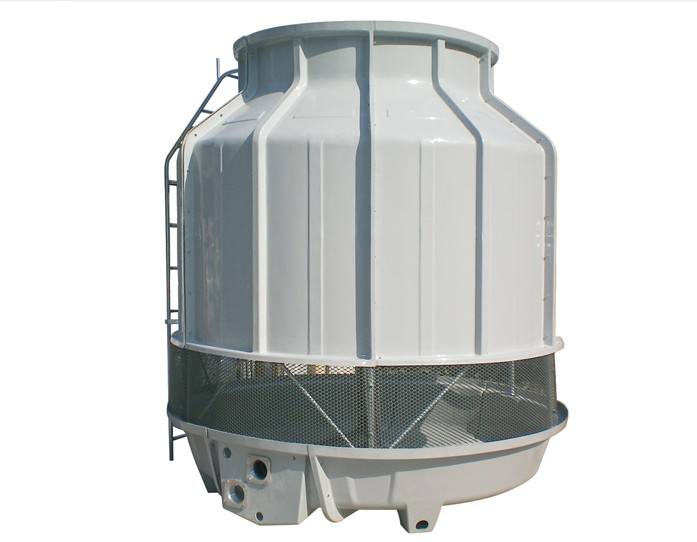
Яку роль відіграє лазерна трубка в лазерному охолодженні?
У "The лазерна трубка є критичним компонентом у багатьох лазер системи, зокрема в CO2 лазери. Це місце, де лазер відбувається дія, і під час роботи він виділяє значну кількість тепла. The лазерна трубка зазвичай складається з герметичної скляної або керамічної трубки, заповненої газовою сумішшю, такою як вуглекислий газ, азот і гелій. Під час дії електричного струму газова суміш збуджується, утворюючи лазерне світло. The потреби в охолодженні з лазерна трубка є значними, оскільки ефективність в лазер дія та тривалість життя лазерна трубка на них безпосередньо впливає температура.
Ефективне охолодження лазерна трубка досягається шляхом циркуляції теплоносія, як правило, води, навколо зовнішньої сторони трубки. Теплоносій поглинає тепло від лазерна трубка і переносить його в теплообмінник, де він розсіюється. Температура теплоносія ретельно контролюється для підтримки оптимальної робочої температури лазерна трубка. Належне охолодження гарантує, що лазерна трубка діє ефективно, виробляє стабільно лазерний промінь, і має тривалий термін служби. Регулярне технічне обслуговування система охолодження, включаючи прибирання лазерна трубка і перевірка швидкості потоку теплоносія є важливою для забезпечення надійності лазер операція.
Розуміння лазерного синтезу порошкового шару та проблем охолодження
Плавлення лазерного порошку (LPBF) – це процес адитивного виробництва, який використовує a лазер високої потужності для вибіркового плавлення та сплавлення частинок металевого порошку, шар за шаром, для створення тривимірних об’єктів. Ця технологія є широко використовується у таких галузях, як аерокосмічна, автомобільна та медична для виробництва складних високоефективних деталей. The лазерний промінь фокусується на тонкому шарі металевого порошку, розплавляючи частинки та сплавляючи їх разом. Як лазер рухається по шару порошку, створює суцільний шар споруджуваного об’єкта. Цей процес повторюється для кожного наступного шару, доки не буде завершено весь об’єкт.
У "The потреби в охолодженні у LPBF є значними через високі температури, пов’язані з плавленням металевого порошку. Інтенсивне тепло, що утворюється лазер може спричинити термічну напругу, викривлення та навіть розтріскування деталі, що будується, якщо не керувати належним чином. Ефективне охолодження має важливе значення для контролю теплових градієнтів усередині деталі та забезпечення точності її розмірів і механічної цілісності. У LPBF використовуються різні стратегії охолодження, зокрема використання потоку інертного газу для видалення тепла з камери збірки, включення каналів охолодження в платформу збірки та оптимізація параметрів процесу для мінімізації надходження тепла. Ретельний контроль процесу охолодження має вирішальне значення для отримання високоякісних бездефектних деталей у LPBF. Для процесів адитивного виробництва, таких як LPBF, наш Гвинтова охолоджувальна машина з повітряним охолодженням забезпечує стабільне та надійне охолодження.
Як оптимізувати параметри лазера для ефективного охолодження?
Оптимізація лазер Параметри є вирішальними для досягнення ефективного охолодження та максимізації продуктивності лазер системи. ключ лазер Параметри, які впливають на теплогенерацію, включають потужність лазера, частота лазера, енергія лазерного імпульсу, і лазер швидкість сканування. Ретельно регулюючи ці параметри, можна досягти бажаних результатів процесу при мінімізації підведення тепла. Наприклад, зниження потужність лазера або збільшення лазер швидкість сканування може зменшити кількість тепла, що надходить у матеріал, зменшуючи навантаження на систему охолодження.
На додаток до налаштування лазер параметрів, оптимізація параметрів процесу також може підвищити ефективність охолодження. Це може передбачати використання таких методів, як попереднє нагрівання матеріалу для зменшення різниці температур під час лазер обробки або за допомогою імпульсного лазер режим для забезпечення періодичного охолодження між імпульсами. Ретельний вибір параметрів процесу в поєднанні з моніторингом температури та зворотним зв’язком у режимі реального часу може допомогти оптимізувати лазер процес для ефективного охолодження та високоякісних результатів. Якщо ви хочете покращити свій лазер продуктивності системи, спробуйте ознайомитися з нашими Гліколеві охолоджувачі для точного контролю температури.
Які останні досягнення в технології лазерного охолодження?
Останні досягнення в лазерне охолодження технології зосереджені на покращенні ефективності, надійності та точності систем охолодження для лазер програми. Одним із напрямків розвитку є розробка більш ефективних і компактних лазерні чиллери які можуть забезпечити точний контроль температури, споживаючи менше енергії. Ці передові лазерні чиллери часто включають такі функції, як компресори зі змінною швидкістю, електронні розширювальні клапани та інтелектуальні системи керування, які можуть адаптуватися до змін теплового навантаження та оптимізувати ефективність охолодження.
Іншою сферою прогресу є розробка нових методів охолодження, таких як Доплерівське охолодження, охолодження бічної смуги, і Сізіфове охолодження. Ці прийоми використовують лазерне світло маніпулювати рухом атомів або іонів, зменшуючи їхню кінетичну енергію та ефективно охолоджуючи їх до надзвичайно низьких температур. Хоча ці методи в основному використовуються в наукових дослідженнях і квантових обчисленнях, вони мають потенціал для адаптації для промислових лазер охолодження в майбутньому. Крім того, прогрес у матеріалознавстві призвів до розробки нових матеріалів і конструкцій теплообмінників, які можуть покращити ефективність теплопередачі та зменшити розмір і вагу систем охолодження. Щоб ще більше покращити ваші можливості охолодження, Вибухозахищені охолоджувачі пропонує розширені функції безпеки без шкоди для продуктивності.
поширені запитання
Яка основна мета лазерного охолодження?
Основне призначення лазерне охолодження полягає в підтримці оптимальної робочої температури лазер систем, забезпечуючи їх ефективність, стабільність і довговічність. Це запобігає термічному пошкодженню та зберігає якість лазерний промінь.
Як працює лазерний чиллер?
А лазерний чиллер працює шляхом циркуляції охолоджуючої рідини через лазер система поглинання тепла. Потім нагрітий охолоджувач охолоджується в холодильній машині за допомогою системи охолодження та рециркулює, забезпечуючи безперервне охолодження.
Які типові лазери використовуються в промисловості?
Поширений види лазерів використовуються в промисловості включають CO2 лазери, волоконних лазерів, діодні лазери, і ексимерний лазер. Кожен тип має унікальні характеристики та вимоги до охолодження.
Чому охолодження важливе для лазерного різання?
Охолодження важливо в лазерне різання оскільки це запобігає термічному пошкодженню матеріалу та лазер системи, забезпечує послідовність потужність лазера і якість променя, а також підтримує точність процесу різання.
Які ключові фактори при виборі лазерного чилера?
Ключові фактори при виборі a лазерний чиллер включити лазервихідна потужність, теплове навантаження, що створюється під час роботи, необхідна температурна стабільність і ефективність чиллера.
Як оптимізувати параметри лазера для кращого охолодження?
Ви можете оптимізувати свій лазер параметрів, регулюючи потужність лазера, частота лазера, і енергія лазерного імпульсу щоб мінімізувати виділення тепла при досягненні бажаних результатів. Крім того, оптимізація параметрів процесу та використання моніторингу температури в реальному часі можуть підвищити ефективність охолодження.
Висновок
- Лазерне охолодження має важливе значення для підтримки продуктивності та довговічності лазер системи.
- Різні види лазерів, наприклад CO2 лазери, волоконних лазерів, і діодні лазери, мають унікальні вимоги до охолодження.
- Лазерні чиллери відіграють вирішальну роль у відведенні тепла та підтримці стабільних робочих температур.
- Ефективні стратегії управління теплом включають використання відповідного розміру лазерні чиллери, оптимізуючи лазер параметрів і забезпечення належної вентиляції.
- У "The лазерна трубка вимагає ретельного охолодження, щоб зберегти його ефективність і термін служби.
- Плавлення лазерного порошку представляє унікальні проблеми з охолодженням, які вимагають спеціальних методів охолодження.
- Досягнення в лазерне охолодження технології продовжують покращувати ефективність і точність систем охолодження.
- Галузі, починаючи від Пластмаси та гума до Центри обробки даних покладатися на ефективні лазерне охолодження для оптимальної продуктивності.
- Щоб дізнатися більше про те, як наші продукти можуть задовольнити ваші потреби, відвідайте нашу сторінку на Промислові чиллери для текстильної промисловості.
- Для тих, хто працює в секторі харчових продуктів і напоїв, наш Промислові гліколеві охолоджувачі для пивоварні призначені для забезпечення оптимальних рішень для охолодження.
- Належне обслуговування та моніторинг лазер Системи охолодження мають вирішальне значення для забезпечення їх ефективності та довговічності лазер обладнання.
Я вірю, що цей вичерпний посібник висвітлив тонкощі лазерне охолодження і його ключову роль у різних промислових застосуваннях. Якщо у вас виникнуть додаткові запитання або потрібні індивідуальні рішення, будь ласка, не соромтеся зв’язатися. Ваш успіх є нашим пріоритетом, і ми тут, щоб підтримувати вас на кожному кроці.
